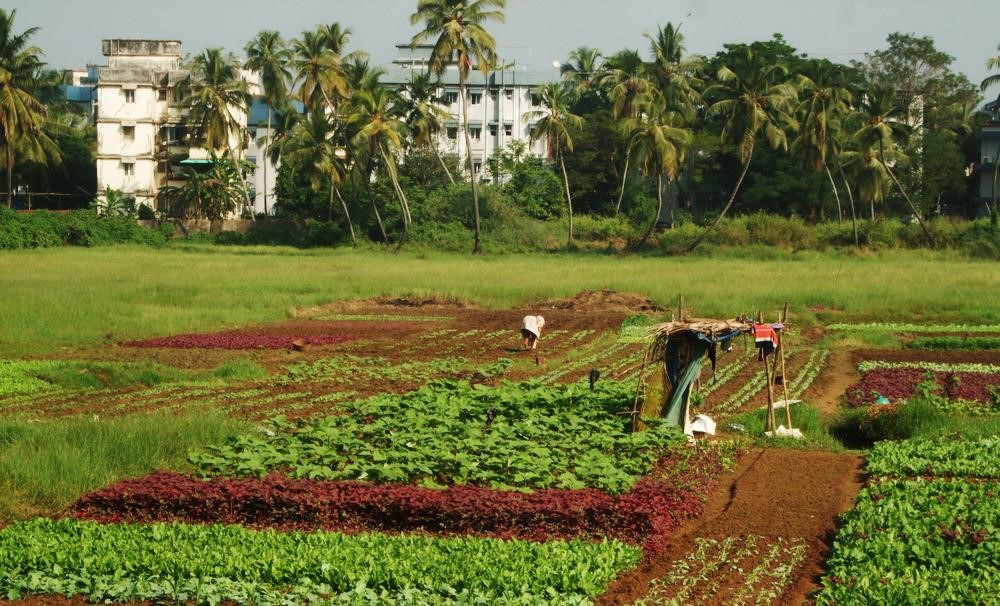The conversion of Alvara lands into freely transferable assets opens the door for their sale to non-Goans leading to demographic and ecological shifts

In recent developments, the Revenue Department of the Government of Goa has granted Class I occupancy status to holders of Alvara land rights, a move that raises critical questions about whether such decisions serve public interest or reflect the influence of real estate developers.
Traditionally, Alvara lands were held under conditional tenure, and as per the Goa Land Revenue Code, 1968, their holders ought to be classified as Class II occupants, enjoying use rights but with restrictions on transfer or sale (Goa Land Revenue Code, 1968, §§20–24).
The decision to elevate these to Class I occupancy—equating to full ownership—calls for a closer examination of whether it is an administrative regularisation or a transformation driven by private capital interests.
The Goa Land Revenue Code defines Class I occupancy as an entitlement to land in perpetuity with unrestricted rights of transfer, sale, mortgage, or lease. In contrast, Class II occupants hold land on similar terms of duration but with governmental control over alienation (Goa Land Revenue Code, 1968, §20).
These grants carried residual ownership rights vested in the State, echoing the principles of emphyteusis under Portuguese law, where the holder enjoyed extended use but not full title.
The gravity of the present policy shift becomes apparent in light of a recent report presented before the Goa Legislative Assembly. The Revenue Minister stated that from 2022 to 2025, over 4,00,000 square metres of land classified as government, Alvara or Aforamento lands have been converted into Class I holdings through quasi-judicial Mamlatdar proceedings.
These land parcels, located primarily in Pernem and Sattari, now belong to private individuals and religious institutions, with the Goa Archdiocese being granted 60,000 square metres in Velus, Sattari and four siblings of the Virnodkar family receiving 53,000 square metres in Arambol.
While the reclassification was accompanied by a revenue collection of ₹2.25 crore, it would be worthy to analyse legally whether such conversions bestow a disproportionate economic benefit on a select few, enabling them to exert absolute dominion over lands that were never intended to become private property in the conventional sense.
The concern is heightened by the geographical location of these lands, which are in high-value coastal areas witnessing a tourism boom. Such sudden shifts in land status, while seemingly compliant with administrative formalities, beg the question of: Who truly benefits?
These concerns are not new. A 2015 audit by the Comptroller and Auditor General of India observed irregularities in the sale of Alvara lands, including unauthorised conveyances and transfers without State sanction (CAG, 2015). The findings led to the formation of an expert committee under the Chairmanship of Collector N.D. Agarwal, which recommended tighter controls to prevent illegal alienation. However, instead of stricter enforcement, the recent policy appears to legitimise what was previously considered unlawful.
In assessing whether this change is rooted in administrative necessity or external pressure from developers, one must consider the nature of the beneficiaries.
Earlier, according to Naik, S. (2024) in his article entitled: Real Estate Pressures and Policy Shifts in Goa: in many cases, the parcels granted Class I occupancy were promptly advertised for sale or shown as part of development proposals, indicating that the original grantees may be acting as intermediaries rather than end-users.
Such behaviour points to pre-arranged agreements between landholders and builders, where formal title acquisition by the former is followed by sale to the latter.
This phenomenon is not without precedent. Ancient Indian history provides instructive parallels. Land grants made by early Indian rulers, particularly during the Gupta and post-Gupta periods, were conditional and service-linked (Narayan, 2024).
These grants whether to Brahmins for religious purposes or to military officers—came with stipulations barring their alienation. The Arthashastra advised that such lands should not be sold, mortgaged, or repurposed except for the original intent of the grant (Kane, 2022).
Any deviation from this norm was treated as a breach of trust and, in some periods, rendered the land liable for resumption.
Much like those historical grants, the Alvara system instituted by the Portuguese did not envision private commodification of land. The grantees were permitted to possess and cultivate the land, but the title remained vested in the Crown, and subsequently, in the Government of Goa post-1961 (Goa Gazette, 1965).
Hence, the conversion to Class I occupancy deviates sharply from the historical and legal foundation of these tenures.
Goa’s cultural identity and land economy are closely linked to traditional landholding patterns. The conversion of Alvara lands into freely transferable assets opens the door for their eventual sale to non-Goans, potentially leading to demographic and ecological shifts.
Defenders of the policy could argue that rightful claimants, who have been in uninterrupted possession of these lands for decades, deserve legal clarity.
In conclusion, while the grant of Class I occupancy to former Alvara landholders has been framed as a legal regularisation exercise, its timing, beneficiaries, and economic outcomes suggest the possibility of influence by vested real estate interests.
If the State does not transparently explain the basis for such reclassifications, and ensure that similar benefits are made available to all eligible Goans, the decision will likely be viewed as a subversion of the public trust doctrine in land governance.
Goa must decide whether to preserve the conditional ethos of its unique land tenure systems or allow them to be hollowed out under the guise of administrative modernisation.